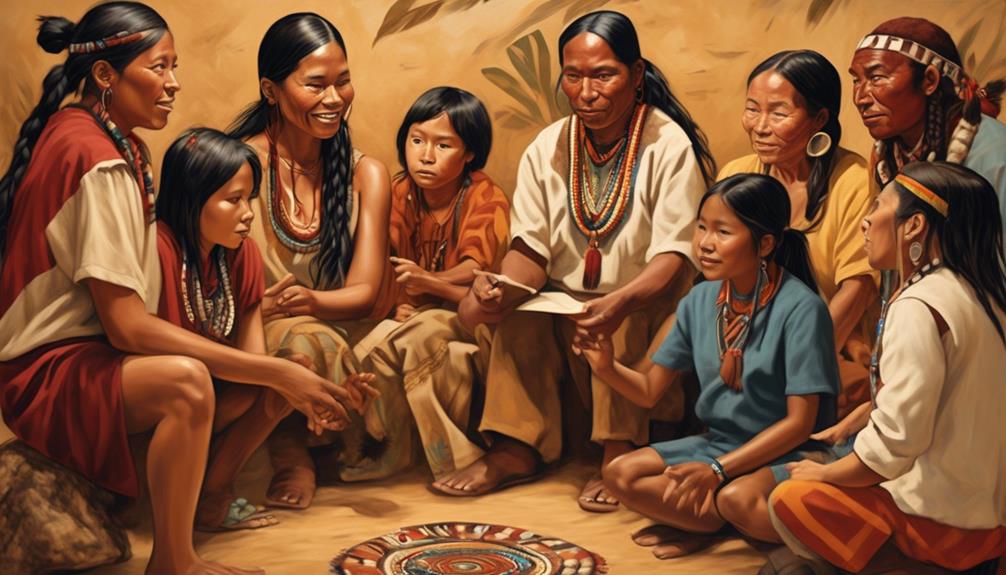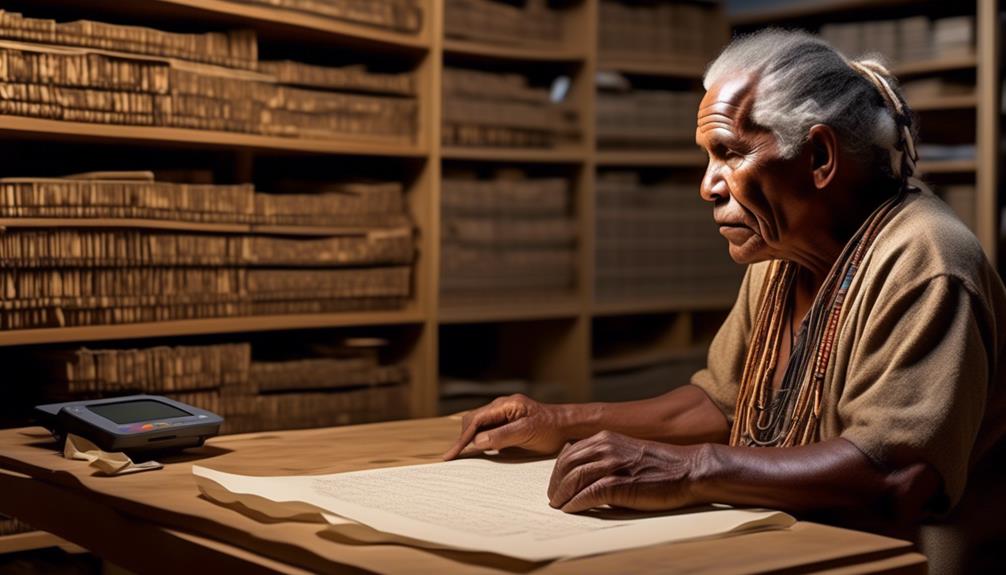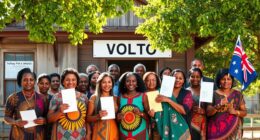Navigating the complexities of the modern world highlights the critical importance of preserving and recognizing the value of Indigenous languages.
However, the path to achieving this recognition and understanding is multifaceted, requiring a collaborative effort from various stakeholders.
By exploring the intricacies of Indigenous language preservation, understanding the benefits of bilingualism in Indigenous communities, and acknowledging the challenges that impede language revitalization, we can gain a deeper appreciation for the significance of this endeavor.
Join me as we uncover the strategies and initiatives that can support the promotion of Indigenous language skills, shedding light on the profound impact of recognizing and valuing these linguistic traditions.
Key Takeaways
- Preserving indigenous languages is crucial for maintaining cultural identity and transmitting cultural values.
- Bilingualism in indigenous communities fosters stronger connections to cultural heritage and preserves traditional knowledge.
- Challenges in preserving indigenous language skills include the imposition of European languages, limited resources, and discriminatory laws and policies.
- Strategies for supporting indigenous language revitalization include engaging with preservationists, advocating for language action plans, integrating indigenous languages in school curricula, and encouraging traditional teaching and learning methods.
Importance of Indigenous Language Preservation
Preserving indigenous languages is crucial for maintaining cultural identity, transmitting cultural values, and ensuring human rights in diverse communities around the world. Indigenous languages are the cornerstone of our heritage and cultural legacy. They embody the wisdom of our ancestors and hold the key to our traditional knowledge. By supporting the preservation of indigenous languages, we aren't only safeguarding linguistic diversity but also upholding the cultural heritage of indigenous communities.
The decline of indigenous languages poses a significant threat to our cultural and biological diversity. Approximately half of the world's recognized languages are endangered, highlighting the urgent need to protect and revitalize these linguistic treasures. Factors such as loss of land and resources, economic and social marginalization, and unequal access to education contribute to the gradual erosion of indigenous languages.
By acknowledging the pivotal role of indigenous languages in climate action, biodiversity, and sustainable development, we can cultivate a deeper appreciation for the invaluable contribution of linguistic diversity to our shared humanity.
In essence, promoting the recognition and understanding of indigenous language skills isn't just about linguistic preservation; it's a fundamental aspect of serving and supporting indigenous communities in their pursuit of cultural resilience and empowerment.
Benefits of Bilingualism in Indigenous Communities
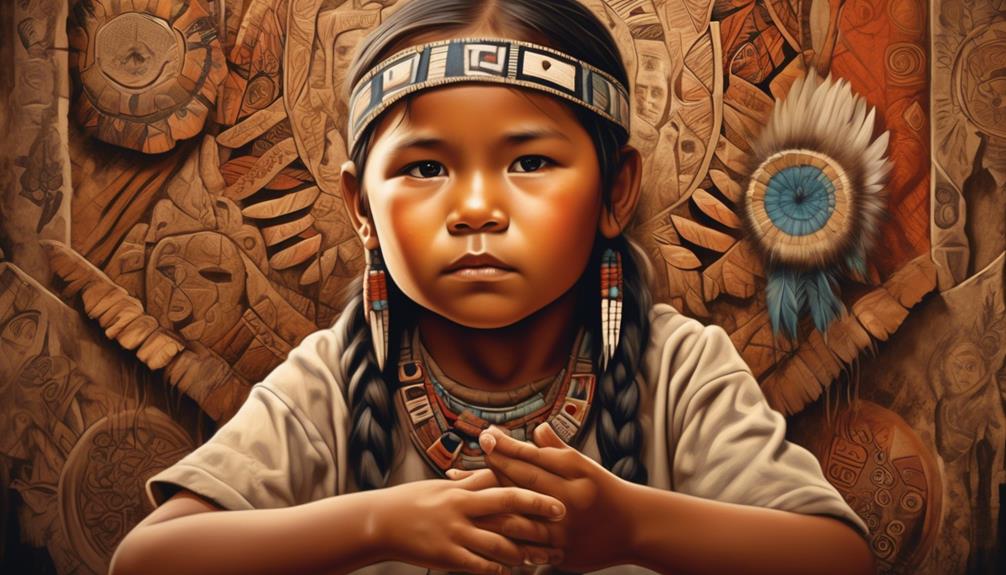
Bilingualism in Indigenous communities plays a pivotal role in preserving and promoting the use of traditional languages and cultural heritage. The ability to communicate in Indigenous languages throughout native communities fosters stronger connections to cultural values and heritage. Heritage language programs and language revitalization efforts are crucial in maintaining the linguistic and cultural diversity of Indigenous cultures.
Additionally, being bilingual aids in the preservation and transmission of traditional knowledge, stories, and oral histories within Indigenous communities. This not only enriches cultural orientation but also contributes to the overall empowerment and inclusivity of Indigenous peoples. Moreover, speaking and understanding multiple languages enhances cognitive abilities and problem-solving skills, contributing to mental agility and flexibility.
Language immersion programs further support the development and maintenance of bilingualism, providing greater access to opportunities, resources, and communication channels. Ultimately, the benefits of bilingualism in Indigenous communities extend beyond individual skill development, positively impacting the preservation and promotion of traditional languages, cultural heritage, and community empowerment.
Challenges in Preserving Indigenous Language Skills
The profound impact of European colonization on Indigenous languages has led to significant challenges in preserving and promoting the use of traditional languages and cultural heritage within native communities. These challenges include:
- Erosion of Traditional Cultural Values: The imposition of European languages and cultural norms has led to a decline in the transmission of traditional knowledge and values within Indigenous communities, impacting the use of Indigenous languages in daily life.
- Limited Community Resources: Many Indigenous communities face economic and infrastructural challenges, which hinders their ability to allocate resources for language preservation efforts, such as developing language learning materials and organizing cultural events.
- Educational Barriers: The lack of inclusion of Indigenous languages in mainstream education systems diminishes opportunities for language revitalization. Additionally, discriminatory laws and policies historically aimed at suppressing Indigenous languages have perpetuated intergenerational language loss.
Addressing these challenges requires a multi-faceted approach that involves collaborative efforts between Indigenous communities, educational institutions, and policymakers to create sustainable language preservation programs.
Recognizing the vital role of Indigenous languages in preserving Indigenous Peoples' cultures and traditional knowledge is crucial for promoting the recognition and understanding of Indigenous language skills.
Strategies for Supporting Indigenous Language Revitalization
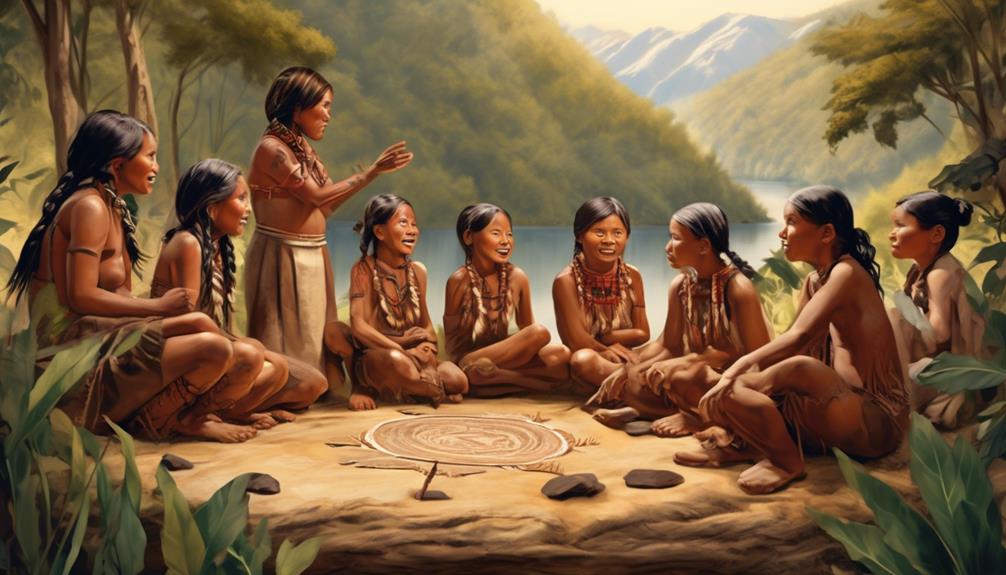
Implementing effective strategies for supporting the revitalization of Indigenous languages is imperative for safeguarding cultural heritage and promoting linguistic diversity. To effectively support Indigenous language revitalization, it is crucial to engage with preservationists and experts, recognize and advocate for Indigenous language action plans, and actively listen to and value Indigenous language speakers' stories and experiences. Additionally, advocating for the integration of Indigenous languages in school curricula and supporting language learning initiatives in schools is vital. Traditional ways of teaching, learning, and listening in language transmission should be encouraged, and the importance of community involvement in language revitalization must be recognized. Below is a table highlighting key strategies for supporting Indigenous language revitalization:
| Strategies | Description |
|---|---|
| Engage with experts | Learn from preservationists and language experts to gain valuable knowledge and experience. |
| Advocate for action | Recognize and advocate for the implementation of Indigenous language action plans and their goals. |
| Integrate in schools | Support the integration of Indigenous languages in school curricula and promote language learning initiatives. |
| Value traditional ways | Encourage the use of traditional teaching and learning methods and recognize the importance of community involvement. |
| Listen attentively | Actively listen to Indigenous language speakers, valuing their stories and experiences, and recognizing cultural significance. |
These strategies are essential for effectively supporting the revitalization of Indigenous languages and upholding cultural rights.
Impact of Recognizing Indigenous Language Skills
Recognizing the impact of Indigenous language skills on cultural heritage and identity, we acknowledge the imperative role they play in promoting inclusivity and sustaining linguistic diversity.
The impact of recognizing Indigenous language skills is profound, with far-reaching implications for individuals, communities, and societies at large. Here are the key impacts to consider:
- Preservation of Cultural Diversity: Recognition of Indigenous language skills is essential for preserving the rich tapestry of cultural diversity. It ensures that heritage languages continue to thrive, contributing to the mosaic of human expression and understanding.
- Empowerment of Native Educators: Acknowledging Indigenous language skills empowers native educators to pass on traditional knowledge and practices. This sustains the intergenerational transmission of Indigenous knowledge, reinforcing cultural identity and resilience.
- Influence on Cultural Policies: Recognizing Indigenous language skills influences cultural policies, fostering an environment where linguistic diversity is valued and supported. It paves the way for inclusive educational and societal structures that honor and integrate Indigenous languages and cultures.
Understanding the impact of recognizing Indigenous language skills underscores the urgent need to support these invaluable linguistic assets, which are intrinsically linked to cultural heritage and identity.
Frequently Asked Questions
How Can We Promote Indigenous Languages?
To promote indigenous languages, we prioritize:
- Community involvement
- Educational resources
- Cultural events
- Intergenerational learning
We advocate for language revitalization through:
- Government support
- Linguistic diversity
- Indigenous language immersion
Digital platforms and social media outreach are essential for reaching wider audiences.
Why Is It Important to Speak Indigenous Languages?
Speaking indigenous languages is crucial for preserving cultural identity, fostering linguistic diversity, and enhancing intergenerational communication. It strengthens community connection, enriches education, and holds historical significance.
Revitalization efforts not only promote social cohesion but also create economic opportunities. Embracing indigenous languages is a beautiful tapestry that weaves the past, present, and future, enriching our lives and honoring the wisdom of our ancestors.
Why Is It Important to Preserve and Honor Language and Culture?
Preserving and honoring language and culture is crucial for maintaining our cultural identity, heritage, and connection to the community.
It's important for the revitalization of tradition, education, awareness, and respect for diversity.
By preserving our language and culture, we empower communication, promote healing and reconciliation, and celebrate resilience.
It's a way to ensure that our traditions and values are passed down for generations to come.
What Is an Example of an Indigenous Language?
Examples of indigenous languages include:
- The Maori language spoken by the Maori people in New Zealand.
- The Cherokee language spoken by the Cherokee people.
- The Navajo language spoken by the Navajo Nation in the Southwestern United States.
These languages are essential to cultural diversity. They are being revitalized through language preservation and revitalization efforts. These efforts contribute to the success stories of indigenous language revitalization programs.
Conclusion
In recognizing and understanding Indigenous language skills, we plant seeds of cultural preservation and inclusivity.
By nurturing these roots, we can grow a garden of diverse linguistic expression, weaving a tapestry of shared stories and experiences.
Let's water these linguistic flowers, allowing their beauty to bloom and flourish, enriching our understanding and appreciation of Indigenous cultures.
Together, we can sow the seeds of language revitalization and celebrate the rich tapestry of Indigenous languages.
